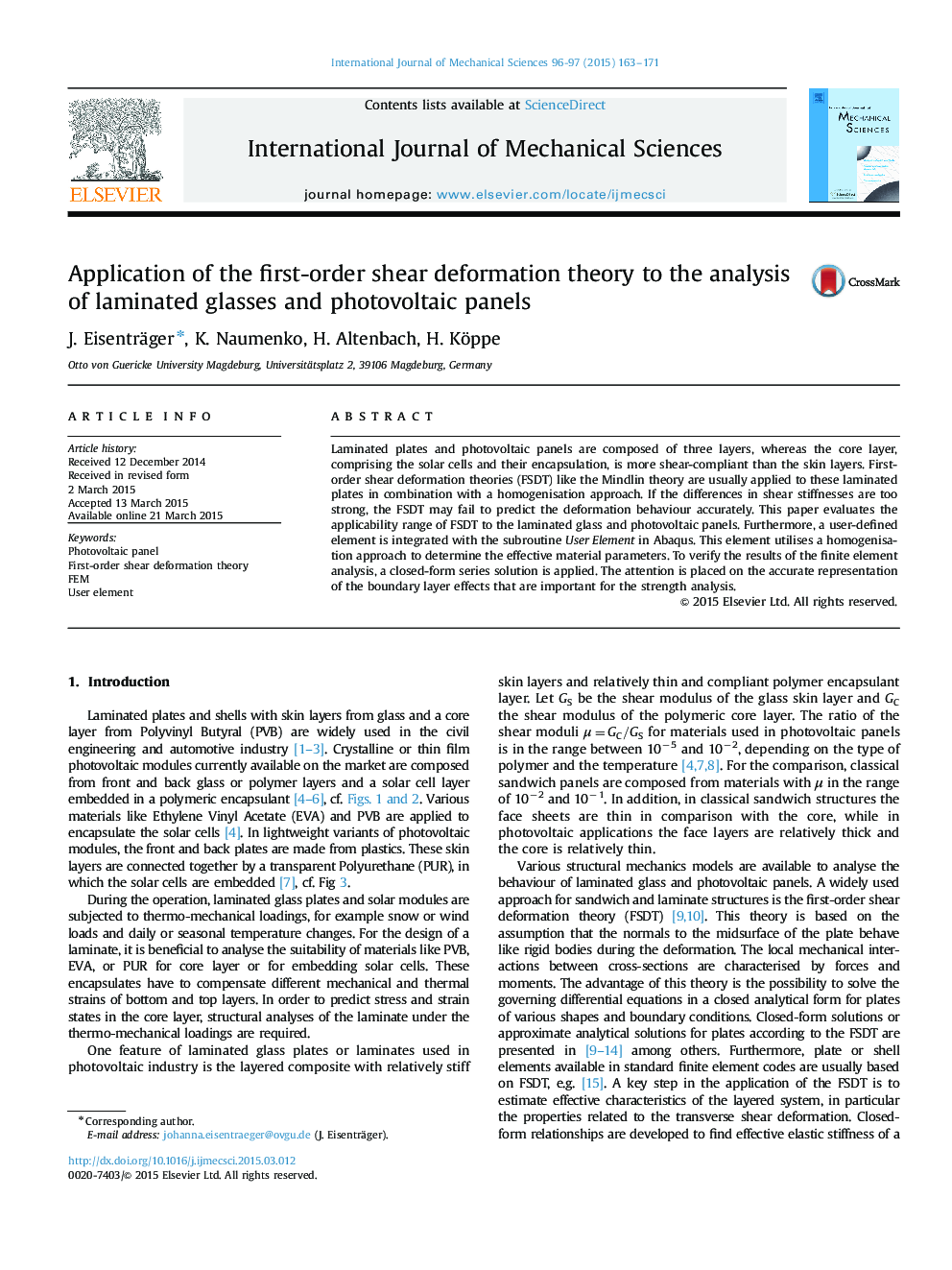| Article ID | Journal | Published Year | Pages | File Type |
|---|---|---|---|---|
| 7174243 | International Journal of Mechanical Sciences | 2015 | 9 Pages |
Abstract
Laminated plates and photovoltaic panels are composed of three layers, whereas the core layer, comprising the solar cells and their encapsulation, is more shear-compliant than the skin layers. First-order shear deformation theories (FSDT) like the Mindlin theory are usually applied to these laminated plates in combination with a homogenisation approach. If the differences in shear stiffnesses are too strong, the FSDT may fail to predict the deformation behaviour accurately. This paper evaluates the applicability range of FSDT to the laminated glass and photovoltaic panels. Furthermore, a user-defined element is integrated with the subroutine User Element in Abaqus. This element utilises a homogenisation approach to determine the effective material parameters. To verify the results of the finite element analysis, a closed-form series solution is applied. The attention is placed on the accurate representation of the boundary layer effects that are important for the strength analysis.
Related Topics
Physical Sciences and Engineering
Engineering
Mechanical Engineering
Authors
J. Eisenträger, K. Naumenko, H. Altenbach, H. Köppe,
